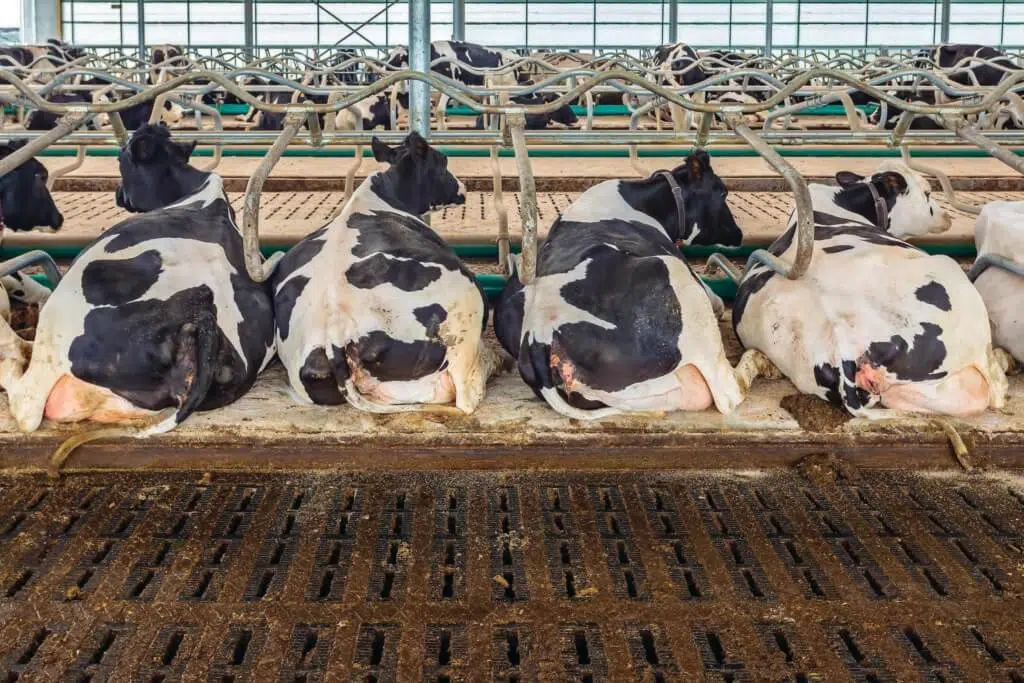Reducing inflammation in the 30 days both pre- and post-calving can play a big role in improving lactation performance and lifetime productivity. In this series, we look at six major areas where a management focus will reduce the risk of excessive inflammation during the transition period. Last month we examined the relationship between inflammation and trough space; this month we are focusing on inflammation and inadequate lying space and time.
Rest and hoof health
Rest is an important activity for transition cows. Studies show that the severity of herd lameness increases during the transition period, probably as a result of compromised lying times, which also have a negative effect on transition success. Hoof health is particularly vulnerable around transition. Relaxation of pelvic muscles and tendons in preparation for calving also leads to relaxation of the muscles and tendons responsible for the suspension of the pedal bone within the hoof capsule.
In addition, long standing times can compromise blood flow to the feet and encourage inflammation. The appearance of sole ulcers in early lactation is a consequence of these factors. Blood circulation is improved when cows are lying down. Transition dairy cows denied adequate access to rest are likely to have elevated levels of circulating stress hormones, which increase fat mobilisation and the risk of excessive inflammation. Lying encourages
rumination and the production of saliva.
A comfortable environment
Providing fresh cows with adequate opportunities to rest in a comfortable stall will help to reduce the risk of acidosis and inflammation. A comfortable environment encourages longer lying times. The design of the cubicle base and partition has a big impact on how easy it is for the cow to get up and down. Difficulty getting up and down impacts lying times and can increase the risk of lameness.
Sand and dried manure solids are the best bedding for encouraging longer lying times. Aim for at least 10 cm of bedding and groom it daily. Cubicles should be sized according to bodyweight. Choose a design that promotes
correct positioning of the cow with no obstacles in the lunge and head bob region. In straw yards, allow 1 m2 per 1 000 kg of 305-day milk yield. And remember, build the transition facility big enough to accommodate the peak in calving and never overstock the transition barn.
Inflammation, the hidden milk thief
Inflammation is the body’s response to injury. It sends a signal to the immune system to heal and repair tissues, as well as prevent infections. Glucose is a crucial energy source for all functions that take place in the cow. In early lactation, any inflammation causes glucose to be diverted from production as the cow will always look after herself first. The worse the inflammation, the more production will be affected.
Cows respond to a negative energy supply by increasing the mobilisation of body reserves, a process which activates immune cells. Extreme negative energy balance is associated with a greater immune response, diverting even more glucose from production. While a low level of inflammation is a normal part of transition, the key is to keep the incidence as low as possible to free glucose for production.









